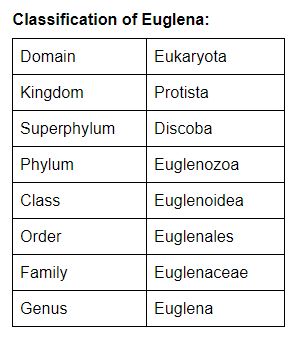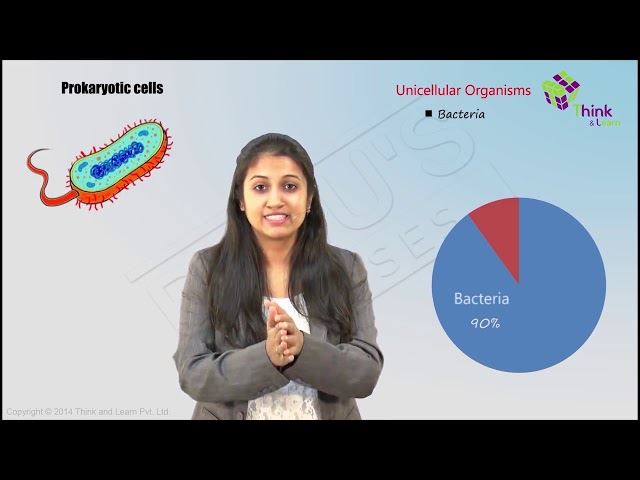Is The Euglena A Plant Or An Animal
Table of Contents:
- Nomenclature of Euglena
- Euglena Diagram
- Morphology and Anatomy
- Diet
- Reproduction
Euglena is a type of euglenoid. Euglenoids are unicellular microorganisms, that accept a flexible body. They possess the characteristic features of plants and animals. Euglena has plastids and performs photosynthesis in light, but moves effectually in search of food using its flagellum at night. There are around m species of Euglena found. They are found in freshwater, saltwater, marshes and also in moist soil.
Euglena Classification
Euglena is a genus of euglenoids. The classification of Euglena is contentious. They are kept in the phylum Euglenozoa or in the phylum Euglenophyta with algae due to the presence of chlorophyll. Since all the species of Euglena exercise not contain chloroplasts, they are kept in the phylum Euglenozoa. The class Kinetoplasteae in the phylum Euglenozoa contains non-photosynthetic flagellates known as Trypanosomes, which are parasitic and cause serious diseases in humans such as African sleeping sickness, leishmaniasis.

Euglena Structure with Diagram and Characteristics

Morphology and Beefcake
- Euglena has an elongated cell measuring fifteen-500 micrometres
- By and large green in colour due to the presence of chlorophyll pigment
- Some of the species of euglena incorporate carotenoid pigments, which give it singled-out color similar red
- Euglena is unicellular having 1 nucleus
- Euglena lacks the cellulose cell wall nowadays in a institute cell
- In that location is a presence of a flexible outer membrane known as a pellicle, which supports the plasma membrane. The pellicle is composed of a proteinaceous strip and supporting microtubules. The pellicle gives flexibility to the cell and an power to contract and change its shape
- A sparse plasma membrane is nowadays, which encloses the cytoplasm and cell organelles
- It contains a contractile vacuole which removes backlog water
- There is inward pocket near the base of operations of flagella called a reservoir, where contractile vacuole dispels excess h2o
- Various cell organelles such equally mitochondria, endoplasmic reticulum and Golgi bodies are present
Nutrition
- Euglena contains chloroplast having chlorophyll. These chloroplasts take the dark-green algal origin and seemed to have acquired due to endosymbiotic human relationship
- They perform photosynthesis, merely also crave other organic nutrients and vitamins such equally vitamin B12
- Some of the photosynthetic euglenoids lose their chlorophyll when they grow in the dark and obtain nutrients heterotrophically from organic affair
- Some species of Euglena are too heterotrophs
- The heterotrophic species of Euglena either absorb organic compounds from the surrounding water or engulf bacteria and protists by phagocytosis within the nutrient vacuoles
- The chloroplast of Euglena contains pyrenoids, which is used to synthesize paramylon, a ꞵ-i, 3 polymer of glucose
- Food is stored in the form of paramylon, which provides free energy when there is no light
- Some species of Euglena produce an alkaloid known equally euglenophycin, which is establish to kill fishes
- Euglena is cultivated for large scale production in some countries like Japan for commercial production of paramylon. Some species of Euglena have shown to contain vitamin East (⍺-tocopherol) and high content of astaxanthin
Locomotion and Phototaxis motility
- It has an eyespot also known as stigma, that contains photoreceptors for detection of light and involved in phototaxis
- Light detected by the eyespot is focused on paraflagellar body
- I or two flagella are present, which help in locomotion
- By and large 2 flagella are present, that originates from a small-scale reservoir within the cell
- One brusque flagellum is present, which does non beetle out of the cell, the long flagellum is used for pond
Reproduction
- Euglena reproduces asexually by binary fission, they dissever longitudinally
- Their lifecycle consists of a free-swimming and a non-motile stage
- It produces thick-walled protective cyst that can withstand unfavourable conditions, this is characteristic of a non-motile phase
- Some euglenoids brand reproductive cyst nether unfavourable weather. Many Euglenoids gather together, get out their flagella and become enclosed in a gelatinous substance. Individual Euglena produces reproductive cyst, which produces daughter cells by binary fission. Under favourable weather, these girl cells become flagellated and come out of the mass. This is known as the palmelloid stage of the lifecycle.
Frequently Asked Questions
Are Euglena a plant or animal?
Euglena is a genus of unicellular, flagellated microorganisms. They possess characteristics of both plants and animals but are neither placed in the kingdom Plantae nor Animalia. They belong to the kingdom Protista.
Are Euglena prokaryotic or eukaryotic?
Euglena is a genus of eukaryotic, unicellular and flagellated microorganisms. They comprise a well-defined nucleus and other cellular organelles such as mitochondria, endoplasmic reticulum, chloroplasts and Golgi bodies, etc.
Where is Euglena found?
They are found in freshwater, saltwater, marshes and likewise in moist soil.
Why Euglena is known as mixotrophs?
Euglena has chloroplasts and performs photosynthesis in light, just moves around in search of nutrient using its flagellum at night. Some of the photosynthetic euglenoids lose their chlorophyll when they grow in the dark and obtain nutrients heterotrophically from organic matter. The heterotrophic species of Euglena either blot organic compounds from the surrounding water or engulf bacteria and protists by phagocytosis inside the food vacuoles.
Since they show both autotrophic and heterotrophic mode of nutrition, they are known as mixotrophic.
What are euglenoids?
Euglenoids are the all-time-known flagellates of the phylum Euglenozoa. Euglenoids have an outer protein layer called the pellicle. They are unicellular and biflagellate. Examples of euglenoids are Euglena, Trachelomonas, etc.
Also Check:
NEET Flashcards: The Living World
NEET Flashcards: Biological Classification
NEET Flashcards: Cell The Unit Of Life
NEET Flashcards: Cell Cycle And Cell Division
NEET Flashcards: Reproduction In Organisms
Recommended Video:

Source: https://byjus.com/neet/euglena-structure-and-classification/
Posted by: martinhambsood.blogspot.com

0 Response to "Is The Euglena A Plant Or An Animal"
Post a Comment